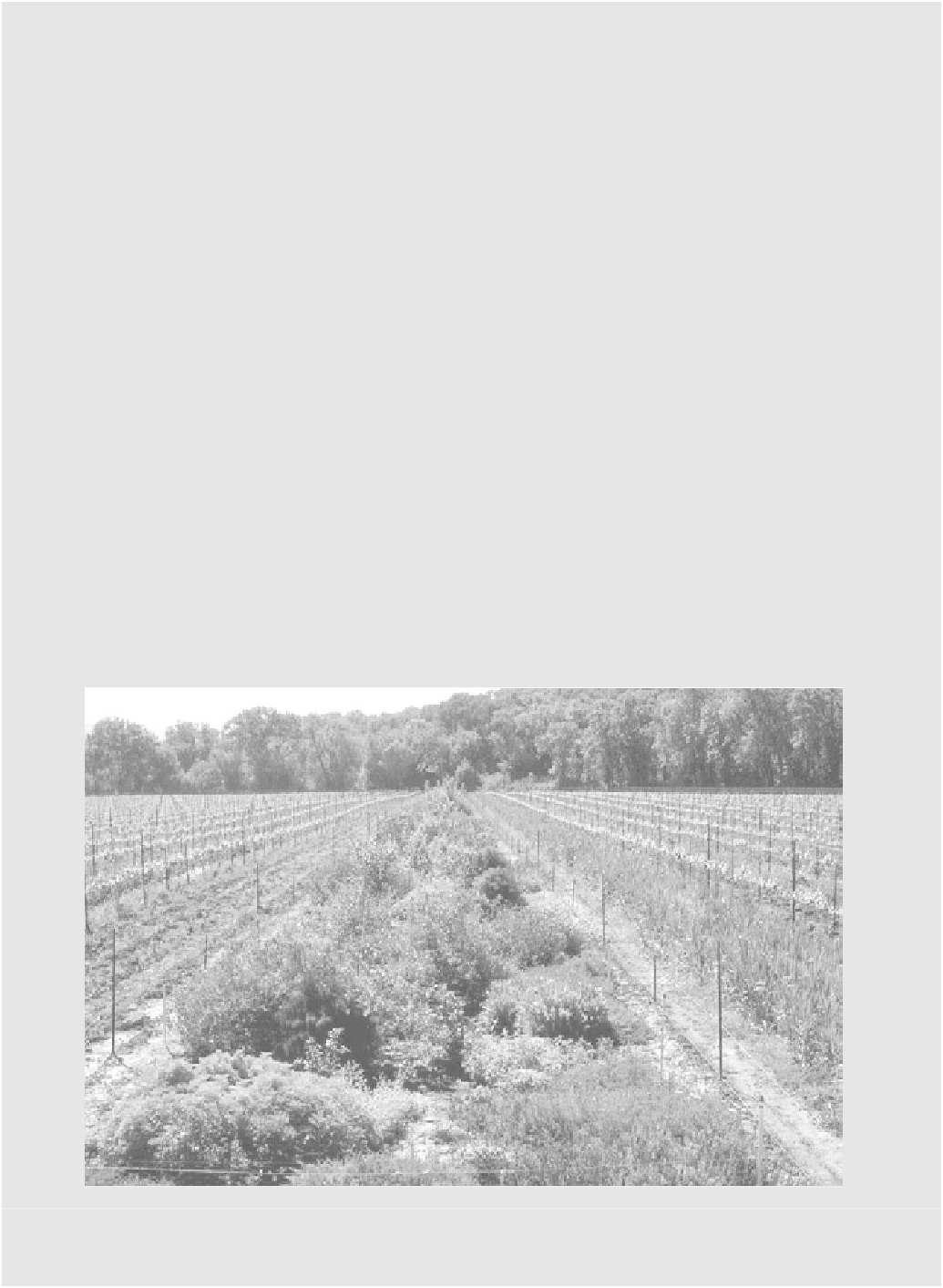Agriculture Reference
In-Depth Information
USING FLOWERING PLANT CORRIDORS TO INCREASE BENEFICIAL INSECT DIVERSITY IN
A VINEYARD
In many of the grape-growing regions of California, large-scale monoculture vineyards dominate the landscape.
The numbers of natural insect predators and parasitoids that might otherwise exist in these landscapes are greatly
reduced because of the relative lack of important food resources and overwintering sites offered by natural and
noncrop vegetation.
In contrast, where viticulturalists have retained or created a more diverse landscape by keeping vineyards smaller
and maintaining natural vegetation patches and riparian corridors at vineyard perimeters, they have encouraged the
presence of natural predators and parasitoids. The positive effect of landscape diversification practices in increasing
the diversity of beneficial insects has been demonstrated in a variety of agroecosystems (Altieri 1994a; Coombes
and Sotherton 1986; Corbett and Plant 1993; Thomas, Wratter, and Sotherton 1991).
In these more diverse viticultural areas, where strips and patches of natural and other noncrop vegetation are
interspersed among monoculture vineyards, analysis of the dynamics of insect predator and herbivore populations
is a good application of island biogeography theory. The grape monocultures in these landscapes are “islands” in
the sense that beneficial insects don't live in them year-round but instead disperse into them from the adjacent
noncrop vegetation when their prey and hosts are present.
A study by Clara Nicholls, Michael Parrella, and Miguel A. Altieri (2000) has shown that where noncrop
vegetation already exists adjacent to a vineyard, its positive effect on beneficial insect biodiversity can be greatly
enhanced by a relatively simple practice: penetrate the vineyard with corridors of flowering plants contiguous with
the adjacent natural vegetation. The corridors serve beneficials both as a habitat and a “biological highway,” allowing
them to move from their refugia in nonagricultural areas deep into the vineyard (Figure 16.7).
The researchers compared two adjacent vineyard blocks that differed in only one respect: block A was bisected
by a 600-meter-long corridor of noncrop vegetation contiguous with a bordering riparian forest; block B had the
bordering forest but no analogous corridor. The corridor in block A supported 65 species of locally adapted flowering
plants, including fennel (
Foeniculum vulgare
), yarrow (
Achillea millefolium
), daisy fleabane (
Erigeron annuus
), and
butterfly bush (
Buddleia
spp.). Most of these plants were nonnative but not particularly weedy (an exception is
fennel; care should be taken in using it for such corridors).
FIGURE 16.7
Corridor of flowering plants penetrating the interior of a vineyard in California.
The corridor facilitates
the movement of beneficial insects into the vineyard from their refugia in the riparian forest (in the background).


Search WWH ::

Custom Search